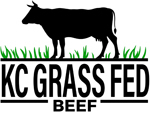With all the recent attention to red meat and its role in our diets, it’s easy to get confused about exactly which cuts are healthy and which are not. While many people have been led to believe that all red meat is bad for you, the truth is that grass-fed beef has some amazing benefits. Compared to conventional grain-fed beef, grass-fed beef is higher in beneficial fats like omega-3 fatty acids, conjugated linoleic acid (CLA), and alpha-linolenic acid (ALA). It’s also lower in calories and less likely to contain dangerous compounds like unhealthy fats, polycyclic aromatic hydrocarbons (PAH), or heterocyclic amide (HCN).
Nutrition
Before we get into the specific benefits of grass-fed beef, it’s important to note that all meat is a good source of protein, iron, B vitamins, zinc, and selenium. However, grass-fed beef is also a great source of vitamin B12, vitamin E, and vitamin K2. Vitamin E is a powerful antioxidant that can help lower our risk of heart disease, improve cognitive function as we age, and even protect our skin from UV damage. Vitamin K2 is a lesser-known vitamin that our bodies use to regulate calcium and bone metabolism. B vitamins are water-soluble, which means our bodies need to replenish them regularly. In addition to these vitamins, grass-fed beef is also a great source of minerals like magnesium, zinc, and iron. It’s also high in protein, especially when compared to other meats like chicken or fish.
Omega-3 fatty acids
Omega-3 fatty acids are a type of polyunsaturated fatty acid found in fish and certain plant oils. They’re often cited as a “good fat” because they can help lower our risk of heart disease, boost brain health, and even improve certain skin conditions like psoriasis and eczema. When it comes to grass-fed beef, the highest concentrations are found in the fat between the meat and the muscle. This means that lean cuts of grass-fed beef are a great source of healthy fats and can be used as healthy cooking oil or as a topping for salads and vegetables. However, it’s worth noting that the amount of omega-3 in beef can vary based on the cut and the level of marbling. In general, grass-fed beef has about three times more omega-3 fatty acids than grain-fed beef. Because of this, it’s also been associated with a lowered risk of heart disease and a reduced risk of blood clots.
Conjugated Linoleic Acid (CLA)
Conjugated linoleic acid (CLA) is a fatty acid that occurs naturally in meat and dairy products. It’s been studied for its potential health benefits, including its ability to reduce body fat, increase muscle mass, and prevent certain cancers like breast cancer. When it comes to grass-fed beef, the highest levels of CLA are found in the fat, with the amounts varying between cuts and cattle breeds. While there have been conflicting studies about whether the benefits of CLA outweigh the negatives, some research has shown that CLA can reduce body fat in humans. While you can find CLA in other foods like cheese, milk, and yogurt, grass-fed beef is one of the best sources of this fat.
Alpha-linolenic acid (ALA)
Alpha-linolenic acid (ALA) is a polyunsaturated fatty acid that’s associated with a lower risk of heart disease and certain cancers. However, it’s important to note that ALA is not the same as the omega-3 fatty acids found in grass-fed beef. Because it’s not a direct source of omega-3, ALA is less often studied for its health benefits. However, it’s still an important fatty acid that helps reduce inflammation in the body and may also play a role in preventing certain diseases.
Grass-fed beef and weight loss
When it comes to weight loss, the fats in grass-fed beef are the real star. A 2012 study found that people who ate a diet rich in grass-fed beef lost more weight than people who ate a diet rich in grain-fed beef. The researchers behind the study aren’t entirely sure why grass-fed beef leads to more weight loss, but they think it may have something to do with CLA. Past studies have found that CLA can reduce the amount of fat our bodies store and increase the amount of fat we burn. While other factors may come into play, the researchers believe that CLA is a big part of the weight loss difference between these two types of beef – and that eating more grass-fed beef could help you burn more fat.
Healthy fats and cholesterol
As we’ve mentioned, grass-fed beef is higher in healthy fats like omega-3 fatty acids, CLA, and ALA. However, many people are still concerned about the impact these fats will have on their cholesterol levels. Studies have found that eating grass-fed beef can lower cholesterol levels, even in people who have high cholesterol. One study found that people who ate grass-fed beef for 12 weeks had lower cholesterol than those who ate grain-fed beef. Again, researchers aren’t entirely sure why this is, but they think it could be due to the higher levels of omega-3 fatty acids in grass-fed beef.
Summary
When compared to conventional grain-fed beef, grass-fed beef is higher in protein and vitamins like B12, E, and K2. It’s also lower in calories and less likely to contain unhealthy fats, PAH, or HCN. In terms of health benefits, grass-fed beef is a great source of protein, vitamins, and minerals like iron, zinc, and magnesium. It’s also high in healthy fats like omega-3 fatty acids, CLA, and ALA. Furthermore, grass-fed beef has been associated with a lower risk of heart disease and lower cholesterol levels. With all these amazing benefits, it’s clear that grass-fed beef is one of the healthiest red meat options out there.

